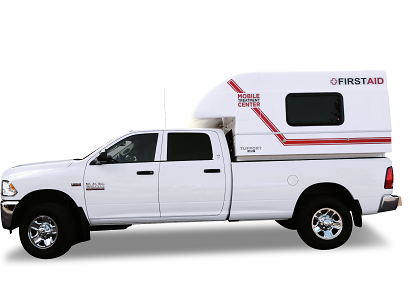ETV vs MTC vs Industrial Ambulance

Below are 3 definitions of vehicles used to transport injured workers on industrial work sites:
Emergency Transport Vehicle (ETV)
The vehicle should be capable of traversing the area it is intended to
serve.
- It should have a minimum headroom of 1 metre (3.3 feet).
- It should provide protection from the natural elements and dust.
- It should provide warmth sufficient for good care for the injured worker, with the patient compartment heated enough to maintain normal body temperature.
- The source of heat must not be a hazard to the occupants of the vehicle when oxygen is in use.
- It should have effective voice communication between the operator and the attendant in the treatment area of the vehicle.
- It should have a means of effective communication with the scene of an accident. For example:
- The driver has a two-way radio that has a direct link with another two-way radio at the scene of the injured or ill worker.
- The driver has a two-way radio that has a link with the employer’s central dispatch centre, which has voice communication via a radio or radiotelephone with workers at the scene.
- In areas with good coverage cell phones may be used.
- It should have effective communication with the hospital.
For example:- The driver has a two-way radio that has a direct link with the hospital.
- A radiotelephone in the vehicle can contact the hospital directly.
- A two-way radio or radiotelephone in the vehicle has a link with the employer’s central dispatch centre, which has voice communication via a telephone or radiotelephone with the hospital.
- The emergency vehicle is accompanied to the hospital by another vehicle that is equipped with a radiotelephone or two-way radio that can contact the hospital directly and its driver can communicate with the emergency vehicle.
- In areas with good coverage cell phones may be used.
An ETV should be capable of transporting at least one worker on a stretcher. It should have a means of restraining a stretcher and have enough padding to prevent excessive jarring of the injured worker.
An ETV should contain the following equipment:
| 1 | Set of hard cervical collars covering all adult sizes (or 2 adjustable hard cervical collars), plus a head immobilizer |
| 1 | Lifting device with handholds, acceptable to WorkSafeBC, and securing straps to secure an injured worker |
| 1 | Stretcher to transport an injured worker. The stretcher must have retainer straps and a suitable mattress or padding |
| 6 | Blankets |
| 2 | Lower limb splints, minimum 1 m in length with suitable padding |
| 2 | Vomitus bags |

Mobile Treatment Centre (MTC)
An MTC is an industrial ambulance that also has the following:
- A sink with running water or, if this is not practicable, an alternative system for supplying fresh, potable water
- Minimum headroom of 1.8 metres (6 feet) in the treatment area, sufficient for the first aid attendant to treat the injured or ill worker
- Dressing station equipment
An MTC may be used in place of a first aid facility and emergency vehicle (ETV or industrial ambulance).

Industrial Ambulance
In addition to the general recommendations for an ETV, an industrial ambulance should also have the following:
- Contain the same equipment as an ETV
- Be used only for first aid treatment and transportation of injured workers, under the direction of the first aid attendant
- Be capable of accommodating at least two workers on stretchers
- Have adequate lighting in the patient compartment, allowing the first aid attendant to see and assess the injured or ill worker and complete documentation, without the use of a flashlight
- Contain a roll cot properly secured and cushioned against excessive jarring
